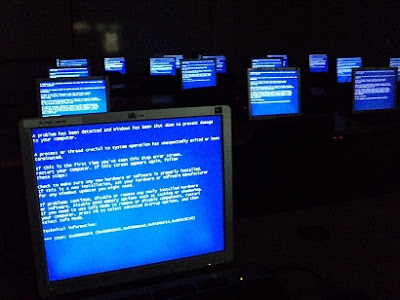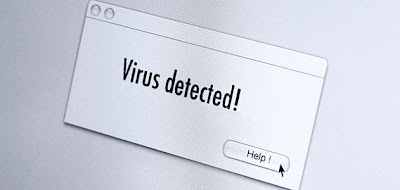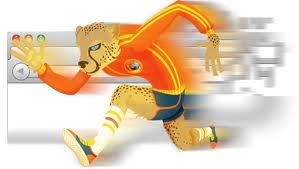How To Speed Up And Make Faster Computer Slow? Getting ways to speed up your computer is the most important thing you could do as a computer user. This may keep your computer from being thrown out the window, or even smashed up with a hammer. This is how far people get pushed when computers don’t do what they want them to do. It is one of those annoying little things that you have to do all the time, maintenance jobs, just to speed up your computer. When you've a slow computer and you are trying to work on it, you can easily get frustrated to the point of doing something drastic.
If you want to improve the speed of your computer, that’s great. However, there are things you can do to speed up your computer. Stop wondering why is my computer so slow. The following is a list of ways you can improve your computer's performance.
Steps to
Speed Up and make faster Your Computer’s Performance
1. Make Sure Your Hardware is Sufficient
You must make sure if your computer have the proper hardware to support Windows is critical.
2. Identify and remove malware
You must make sure your computer there isn't any hiden malware infects currently infecting your system. Even if you think there isn't, chances are some type of malware is hidden somewhere in your system. If you don't already have security software installed such as antivirus or internet security, your computer is most likely infected. Malware includes all malicious computer threats such as viruses, spyware, and adware.
Malware can really slow down your computer and you can't identify malware on your computer without the help of a decent security program. To identify and remove malware you'll need to run a full system scan using your security program. Once you've removed all hidden malware on your computer, you should also consider setting up an automatic weekly virus scan to run so you won't have to remember to do so yourself.
3. Uninstall Unused Programs
Are you one of those people that constantly download programs and install them onto your computer? Every software program you have on your computer is taking up space. It is not only taking up space, but it might also be checking for updates and connecting to the Internet. It also might be starting up when your computer starts up. There are so many good reasons why you should Uninstall Unused Programs. Uninstalling any programs and services that you find unused will really help to clear out the clutter and free up some extra memory on your hard drive.
4. Defragment your computer Hard Drive
The more information and programs you have on your computer, the more it is likely that Windows has placed parts of the same file in different locations on your hard drive. It may do this for hundreds of files and programs, depending on how much space is available. Defragmenting the hard drive places all information for each file in one place. The result can be a faster computer experience. You can find this utility from Start >> All Program >> Accessories >> System tool>> Disk Defragmenter or you can follow procedure from step two where you can get ‘Disk Defragmenter’ under ‘Tool’ Tab.
5. Update device drivers regularly
Every program on your computer must be updated regularly. If you don't do this, you will find that you will get problems. Even Windows itself needs updating, along with any other applications and games, and even hidden device driver software. To see if your device drivers are performing properly you can go to the Control Panel, click on system, advanced settings, and then you will find device manager under the hardware tab. The quickest way to locate and install the newest drivers for your computer is with a simple Google search including your exact computer model name such as, drivers for HP TouchSmart 1050. You'll usually be able to download a complete driver package including all up to date drivers for your computer model on your computer manufacturers website.
6. Scan Your Windows System for Errors
An operating system is a collection of files that perform different functions. It is possible, over time, that one or more of these system files has changed or become corrupted. If this happens, the speed of your system may decrease. By using a utility called “System File Checking”, it will inspect these files and correct any problem it finds.
7. Reinstall The Operating System (OS)
You probably aren't aware of all the unnecessary clutter that can accumulate over time and really slow down your computer. Sometimes the easiest and most effective solution to regain your computers top performance is to simply upgrade or reinstall the entire operating system. Upgrading to the latest OS edition will certainly provide the most effective speed boost, but reinstalling your current operating system will work just as well to give your computer a fresh start. Ideally, you should first back up only your most important files and documents to a separate secure location such as a flash drive or external hard drive, that way you can safely install the operating system and restore your files after.
8. Add more RAM (random access memory)
RAM (random access memory) is basically like a turbo kit for your computer and is a physical hardware component that is easily upgradable. If you wonder why is my computer so slow whenever you have lots of open windows and/or programs open, adding more RAM to your computer can certainly allow you to run more powerful programs at once. Although working with a hardware component yourself may sound a little out of your comfort level, the RAM is one of the easiest hardware devices to replace. Since no data is ever permanently stored on the RAM, you can easily swap out and upgrade RAM in your system without worries of losing or damaging data. The more RAM your computer has, the more high memory programs you can run at once and the more powerful your system will become. 64-bit operating systems can support a whole lot more RAM compared to 32-bit systems which typically have a max RAM limit of 4 GB.
9. Don’t Automatically Start Programs
Programs use operating memory (RAM, also called system resources). Unless you always use these programs, you can keep them from loading at Windows startup and speed both the booting of your computer and its performance.
10. Disk Cleanup
As you all have experience about shortage of memory in your MICRO SD Card, which slow down the mobile function performance. Same thing happen with computer’s primary and secondary memory. So, you must clean your disk to remove unwanted files and folders. Window system provides an utility called ‘Disk Clean UP’, which helps us to remove any error reports, temporary internet files etc. You can find this utility from
Start >>
All Program >>
Accessories >>
System tool>>
Disk CleanUp or you can follow procedure from step two where you can directly click on ‘
Disk CleanUp’ button.
11. Disable Unnecessary StartUp items
When we start our system, systems starts many processes which we don’t require at starting our system and this also slow down our system performance at startup as well as while they are running in background. So, we must stop this unnecessary process that slow down our system performance, which will boost your system speed with almost 20%. You can disable this process from Start >> Run >> (type) ‘msconfig’ follow by enter. Now switch to ‘Start up’ tab and uncheck the unwanted process and then hit OK.
12. Clear out your browser's
Sometimes just doing some basic housekeeping can have a positive, if small, effect on PC performance. It is easy to manually clear out your browser's cache and delete temporary files, but using a free application like CCleaner (Windows) or OnyX (Mac OS X) automates the entire process and finds files (and registry entries in Windows) that you might otherwise miss.
13. Disable Indexing
One of windows properties is indexing files and folder, which help us to search the files and folders faster. But since window uses CPU and memory for indexing it takes lots of memory space and hence you system get slow. So, you can disable this properties which will just slow down searching speed which is not required in personal computer since one knows about his/her data location. To disable this property just right click on the respective drive (any drive) and got to properties, where you need to uncheck the option i.e. ‘Allow files on this drive to have content indexed in addition to file operation'.
14. Clean Temporary Files
This is one of the window inbuilt application, which is used to store ‘Temporary files in respective folders’. Using this application you can see all the temporary files and folder which you need to delete time by time. You can check this application by typing ‘%temp%’ in the Run window. As soon as temporary folder appears just delete all the files and folders. But sometime it is not possible to delete some of the files because it may be open currently. So don’t worry if it doesn’t get deleted.
Computer Tips :
How To Speed Up And Make Faster Computer Slow



















